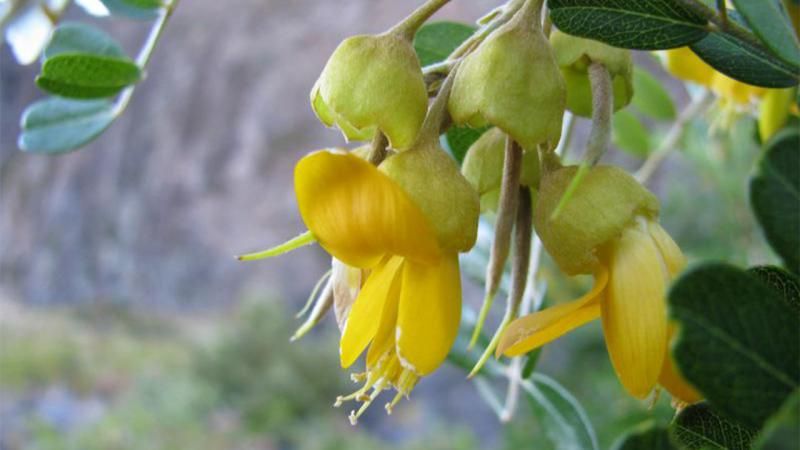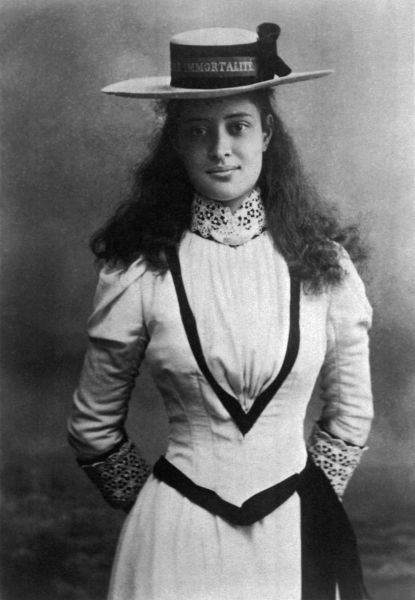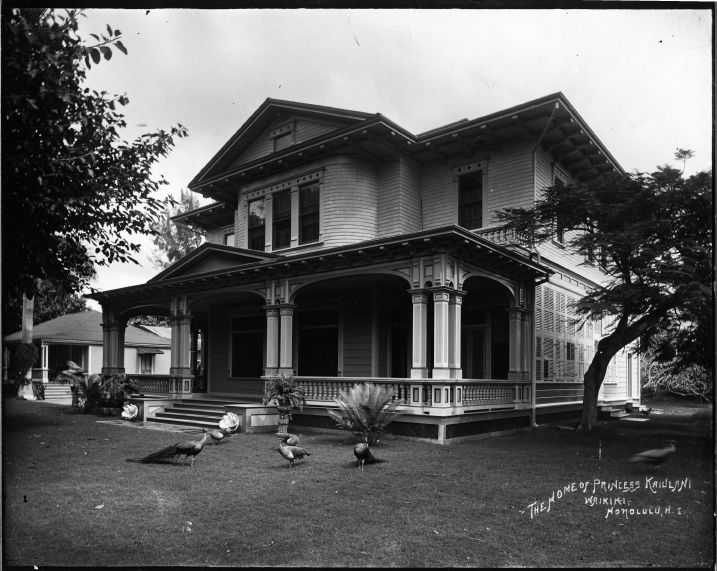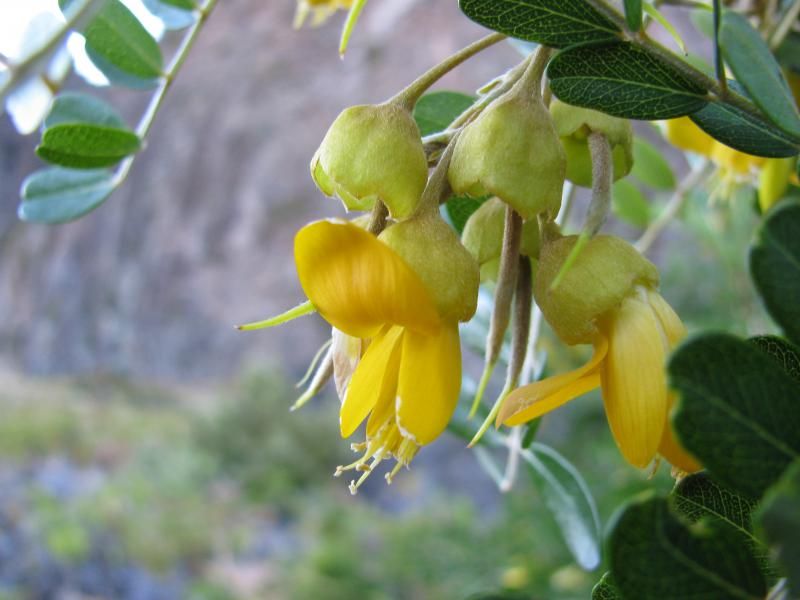Digital Collections
Celebrating the breadth and depth of Hawaiian knowledge. Amplifying Pacific voices of resiliency and hope. Recording the wisdom of past and present to help shape our future.
Kīhei de Silva
Haku Mele: Unknown. I suggest below that the chant was composed for Ka‘iulani in the early 1880s, prior to her mother’s death and her own departure to England. One can easily argue, however, that it was revised after her 1897 return—both in commemoration of those early, untroubled years and as an expression of loyalty to a fallen monarchy and its heir apparent.
Sources: 1- "Kai‘ulani," Mary Kawena Pukui Collection as taught to Māpuana de Silva by Mrs. Patience Namaka Bacon at Kalōpā, Hawai‘i, in June 1982. 2- "I Maunalahilahi ko wehi," part five of a five-paukū mele inoa whose opening lines are, "Aia i ka mauna ko wehi / I ka uhiwai o Manā," HI.M.42:364–5, Bishop Museum Archives. 3- "I Maunalahilahi ko wehi," Kapi‘olani-Kalākaua Collection, HI.M.10:109, Bishop Museum Archives.
Our text: From the Mary Kawena Pukui Collection as taught to Māpuana de Silva by Aunty Pat Namaka Bacon at a Kalōpā, Hawai‘i, workshop in June 1982. English translation by Mrs. Pukui. Hawaiian orthographic editing by Kīhei de Silva.
Mauna Lahilahi, literally “Thin Mountain” (Sterling and Summers 77) juts into the ocean at the foot of Mākaha Valley at the boundary between the ahupua‘a of Wai‘anae and Mākaha. Its 230-foot height makes it less mauna than hill, but its thin, sliced-with-a-knife appearance certainly validates the lahilahi half of its name. The Mākaha shoulder of Mauna Lahilahi curves into the small bay of Keawaiki; a wide sandy beach named Papaoneone once defined the shoreline here (Clark 99), but much of it has been lost to storm surf, the rising sea-level, and insufficient construction set-backs. In the last decades of the Hawaiian Kingdom, visitors to Owen and Hanakaulani Holt’s home at Mākaha Ranch arrived at Keawaiki on small steamers like John Cummin’s Waimānalo, came ashore on smaller rowboats, and rode inland on an enormous, lumbering, English-made "Tally-Ho" coach pulled by a team of chestnut horses (Holt 185). The Holts were staunch supporters of their mō‘ī—in both the heyday of Kalākaua’s early reign and the dark days of Lili‘u’s deposition (Dennis Kauahi, personal communication); consequently, they counted the King, his family, and his court as their most cherished guests.
During this time [the Holt estate] became a very successful, very lavish place—guest cottages all around the big house. They expanded the big house, they added to it, they built new luas, oh my goodness, there were all sorts of things. A little zoo for the kids, and it was in those days that everybody used to go up to Mākaha for weekends to visit. Sometimes the whole court would go out—King Kalākaua, Queen Kapi‘olani, Princess Kekaulike, Po‘omaikelani. ALL of them. And the little boys, Jonah and David . . . They would ALL go out to Mākaha. There are a lot of stories—a lot of mo‘olelo about those visits. They had great hula dancers; Kekaulike was a great hula dancer. Auntie Jennie Wilson told me that whenever [Kekaulike] went anywhere she went with her troops. And Lili‘uokalani, Leleiōhōkū, they [brought] the singing troops . . . [and] Kekaulike composed SO MANY songs. Kekaulike, Eliza Holt . . . they were always composing hulas for the occasion. Auntie Jennie always used to say "I don’t know what happened to [those mele]—if any of them were written down." She always used to ask me if I knew what happened to Eliza Holt’s papers. I said, "In the fire, perhaps—Who knows?" . . . Anyhow, [that’s how] the "golden days" of Mākaha were established. (Holt 179)
"I Mauna Lahilahi Ko Wehi" was probably inspired by a royal visit to the Holt estate in these golden days of Mākaha Ranch. We have no record of the mele’s historical context, but the congruence of text, geography, and Holt family memories strongly suggests an early 1880s scenario: a young Ka‘iulani, as yet untouched by death, "exile," or overthrow [1], arrives at Mauna Lahilahi in the company of her beloved Pāpā and Māmā Mō‘i (her names for Kalākaua and Kapi‘olani). She is greeted with wehi ‘adornments; adorning name-chants’ of flowers and words. One such wehi—"I Mauna Lahilahi"—is composed in celebration of her arrival; perhaps its authors are Kekaulike Kinoiki and her po‘e hula; perhaps it is the work of Po‘omaikelani or Eliza Holt. In any case, the chant opens by offering Ka‘iulani a lei of pua māmane melemele: "Here at Mauna Lahilahi is your adornment; it made of the golden blossoms of the māmane tree." Since the māmane grows in the upper elevations of all the islands but O‘ahu and Moloka‘i (Rock 187), its appearance here signals the laha ‘ole ‘rare, uncommon’ nature of both lei and recipient. Since the māmane blossom is figurative of a very attractive person (Pukui #408)—in full flower, the māmane tree is "dramatically beautiful" and a favorite of birds that feed on its nectar and seed pods (Stone and Pratt 247, Lamoureux 36)—its appearance here speaks of Ka‘iulani’s beauty and her mesmerizing effect on those around her. And since the māmane blossom is both ali‘i-associated (McDonald 63) and quick to wither, its appearance here also points up the near desperation with which Hawai‘i embraced its few and fragile royal children. Thus, the chant’s single, seemingly simple, opening reference to a pua māmane strikes a complex chord of association and emotion that issues from Ka‘iulani’s rare, irresistible, and oh-so-cherished presence.
The second verse of "I Mauna Lahilahi" shifts its focus from flower to princess and from beauty to status: "You are anointed with coconut water whose fragrance is wafted by the gentle Kaiāulu breeze." The ponia ‘to be annointed’ and niu ‘coconut’ of its first line carry considerable import, especially in reference to the only child of the siblings of a childless king, and cannot be glossed as the simple dripping of water from coconut trees after a passing shower. Ponia also means "to be crowned, consecrated, appointed." The coconut tree—revered as the body of Kū (Abbot 35)—is symbolic of a male chief whose power "reaches skyward" and whose "influence . . . rises and becomes overwhelming" (Pukui #560, #926). In 1877, Kalākaua named his sisters Lili‘uokalani and Likelike as first and second in the line of succession; they were to be followed by Likelike’s daughter Ka‘iulani (Peterson 181, Kuykendall 3:477). When considered in this light, ponia i ka wai o ka niu clearly refers to Ka‘iulani’s designation by Kalākaua as third heir apparent to the throne. The soft, refreshing touch of the Kaiāulu breeze in the second line of the verse serves to confirm and broadcast Ka‘iulani’s status. This wind is traditionally characterized as the bringer of life to the Wai‘anae coast (Pukui #2495); it greets Ka‘iulani upon her arrival at Mauna Lahilahi and bears the life-continuing, coconut water fragrance of her anointment. The nation will live because of its Queen-to-be. Since the Kaiāulu originates in Wai‘anae and arrives at Mauna Lahilahi by way of Pōka‘ī Bay to the south, we are also reminded of the once-famous coconut grove of that district: O‘ahu people maintain that the first coconuts in the islands were planted at Nene‘u, Pōka‘ī, by Pōka‘ī, a chief from "distant Kahiki" (Abbot 33). A wind that carries the fragrance of niu from Pōka‘ī is thus a wind of ancestral approval; the founding ali‘i of generations past join with Kalākaua in validating the inheritance of their granddaughter.
The third, culminating verse of the song releases the floodgates of love for Ka‘iulani and offers a prayer of hope for the ulu ‘life, growth, health, inspiration’ of princess, nation, and people. Verse one introduces us to the beautiful, rare flower that is both Ka‘iulani’s adornment and a reflection of Ka‘iulani herself. Verse two describes nature’s confirmation—through coconut water and wind-blown fragrance—of the royal child as heir to the throne and choice of her ancestors. Verse three brings flower and natural action together in the drenching of the māmane in the Nāulu rain: "The Nāulu comes this way to soak the māmane blossom." A nāulu is a sudden, unexpected shower; the Nāulu are specific island rains. The Nāulu that falls on Ka‘iulani is a metaphor of climactic emotion. If this were a song of physical love, we could say that the act is here consummated; since it is a welcoming and adorning song for a princess, we can say that the full impact of her presence is now expressed in a spontaneous outpouring of aloha. There are four Nāulu rains: the Nāulu of Kawaihae, Hawai‘i; the Nāulu of Kanaloa, Maui; the Nāulu of Hālawa, Moloka‘i; and the Nāulu of Ni‘ihau and West Kaua‘i (Nakuina 50, 67, 69, 66, 135). Like the māmane, the Nāulu does not occur on O‘ahu—except, of course, in the presence of Ka‘iulani. The Nāulu that falls on Ka‘iulani is thus a kingdom-spanning rain; it falls from Hawai‘i in the south to Ni‘ihau in the north [2]. It falls now for the princess at Mauna Lahilahi; so does Ka‘iulani attract and unite her people.
The characteristics of these Nāulu rains also add meaning to their presence in Ka‘iulani’s chant. The Nāulu brings life to the parched Kawaihae coast, but its appearance is often associated with malihini discomfort: visitors are unprepared for this Nāulu "because it seems to come out of a cloudless sky, [but] a native knows by observing the winds and other signs of nature just what to expect" (Pukui #1588). Ni‘ihau people define the Nāulu as a "fair and gentle wind from the north, sometimes known as a ‘royal’ wind" (Tava and Keale 27), and their proverbs for the Nāulu dwell on its feminine attributes: "Hanohano Ni‘ihau i ka‘u ike, a ka Nāulu a‘e ho‘oipo nei – Famous is the Ni‘ihau that I see, caressed and loved by the Nāulu wind" (Tava and Keale 28). Kaua‘i people emphasize the cooling nature of their Nāulu when it crosses the Ka‘ulakahi channel and brings moisture to Waimea: "Maika‘i Waimea i ka la‘i / I ke ahe mai a ka Nāulu – Waimea is perfectly beautiful in the calm / Because of the Nāulu’s gentle touch" (HI. M.32:144–145, translation mine). Other capacities attributed to the various Nāulu include those of love-making, flower-adorning, and kapu-signaling:
Aloha pililua i ka ua a ka Nāulu / Ka ua hau lipo i ka nahele.
We two share love in the Nāulu rain / The dark, cool rain of the forest.
(Micro 152.6, translation mine)
Nani wale ku‘u pua i ka wai / I ka lohia e ka ua Nāulu.
So beautiful is my water-soaked flower / Made to sparkle by the Nāulu rain.
(HI.M.15, translation mine)
Kalani nui Liholiho i ke kapu he inoa / He kapu ‘oe no kuwalalua
kauhale a ke ao / He ao he hale makani na ka Nāulu.
Kalaninuiliholihoikekapu is your name / You are the sacred one of the tumbling cloud houses / A cloud formation, a wind house built by the Nāulu.
(HI.M.32:144–145, translation mine)
All told, the various Nāulu rains suggest a retinue of loyal attendants gathered about Ka‘iulani, all bearing gifts of life, love, comfort, beauty, and sacredness. These are what she attracts, what will accrue to her when she gains the throne. Their promise can be summarized as the ulu of Kaiāulu and Nāulu (and perhaps of "ho‘opulu i ka pua . . ."; the sound repetition cannot, I think, be accidental). Ka‘iulani is doused in ulu-bringing rain; her people’s hopes for the ulu of their nation rest in her.
The fourth and fifth verses of "I Mauna Lahilahi" adhere to the conventions of the wehi form: the adornment is offered, the recipient is named, and the song concludes with a restatement of its intent: "The māmane is made into an adornment for the heavenly one, for you O Kawēkiulani; this ends my song to my lady, to Ka‘iulani, whose adornment this is." The mele’s verse four use of Kawēkiulani—Victoria Kawēkiulani Lunalilo Kalaninuiahilapalapa Ka‘iulani’s "second" given name—is highly appropriate. Wēkiu means "tip, topmost, summit, highest rank." Lani means "sky, heaven, royal one." The standard translation of Kawēkiulani, then, is "the royal height." In the context of the pua māmane of "Mauna Lahilahi," however, the name takes on a more organic connotation: she is the choicest blossom at the very tip of the royal tree. The blossom suits her because she is that which the blossom represents.
"Mauna Lahilahi" is one of twelve wehi chants composed for Ka‘iulani and preserved in the Kapi‘olani-Kalākaua HI.M.10 Collection [3]; all comply with the opening-line formula "Aia i place ko wehi" followed by a second line that identifies a specific flower or rain as her adornment: "Aia i Hanalei ko wehi nani / Ka pua ‘a‘ala o ka mokihana" (HI.M.10:106); "Aia i Ulukou ko wehi nani / ‘O ka pua iliau nono i ka lā" (HI.M.10:101); "Aia i Ka‘ena ko wehi / I ka pipili ‘ula o ke kula" (HI.M.10:108). Place names of the other wehi chants include Lehua Island, Hā‘ena (Kaua‘i), Ko‘iahi (Wai‘anae), Hu‘ehu‘e (Hawai‘i), and Manā (Hawai‘i); their adornments include kauna‘oa, hala, maile (twice), and the uhiwai mist.
Despite the apparent popularity of these wehi in Ka‘iulani’s time, only "I Mauna Lahilahi" survives today in anything other than manuscript form. Our hula noho, hula kuhi lima belongs to the Mary Kawena Pukui repertoire and was taught to us by Kawena’s daughter, Mrs. Pat Namaka Bacon, at a 1982 workshop at Kalōpā, Hawai‘i. The workshop was sponsored by Keahi Allen’s State Council on Hawaiian Heritage. Since then, we have reviewed the voice and motions of the mele hula regularly with Aunty Maka; we have performed it several times in her presence and twice in her honor. We have come away, each time, with praise and carefully constructive criticism: motions to smooth out, wrists to relax, fingers to soften, fine distinctions to understand and convey.
Aunty Maka is particularly concerned with two aspects of the dance: 1) softness of wrist and hand, and 2) overall fluidity of movement. It is not a stop-and-go, one-two-three-four hula; graceful transitions are as important as the place, lei, and flower motions they flow into and out of. Her most frequent hula observation of late is directed at the unappealing "stiffness" of today’s dance and dancers. "Where," she keeps asking, "did all this rigor mortis come from?"
We presented "I Mauna Lahilahi Ko Wehi" at the 2005 Merrie Monarch Festival with Mrs. Bacon’s permission and with her understanding that our Maya Saffery (who has been working on this hula since 1998) will dance and chant it in a manner as close to the original as we are capable. Ola nā iwi is our sole concern in this presentation: to honor Ka‘iulani with the only surviving hula of her twelve HI.M.10 wehi, and to assure Aunty Maka that this "Mauna Lahilahi" has been properly transmitted, me ka rigor mortis ‘ole, me ka evolution ‘ole, to yet another generation.
I Mauna Lahilahi Ko Wehi (Ka‘iulani)
I Mauna Lahilahi ko wehi
‘O ka pua māmane melemele.
I ponia i ka wai o ka niu
Kaiāulu a‘e ‘oe he moani.
Ma ‘ane‘i mai ka ua Nāulu
Ho‘opulu i ka pua māmane.
He wehi kāhiko no Kalani
‘O Kawēkiulani nō ‘oe.
Ha‘ina ‘ia mai ka wahine
No Ka‘ulani nō ia wehi.
Your adornment is at Mauna Lahilahi
The golden hued māmane blossoms.
Anointed by water that drops from the coco palms
Whose fragrance is wafted when the Kaiāulu blows.
The Nāulu rain comes this way
To moisten the blossoms of the māmane.
They are to be made into adornments for the heavenly one
For you, O Kawēkiulani.
This ends my song to my lady
To Ka‘iulani, whose adornment this is.
Notes
Works Cited
Abbot, Isabella, Lā‘au Hawai‘i. Honolulu: Bernice Pauahi Bishop Museum Press, 1992.
Clark, John, The Beaches of O‘ahu. Honolulu: University of Hawai‘i Press, 1977.
Holt, John Dominis, Ka Po‘e Kahiko o Wai‘anae. Honolulu: Topgallant Press, 1986.
HI.M.10, Kapi‘olani-Kalākaua Collection, Bishop Museum Archives.
HI.M.15, Ka‘iulani Collection, Bishop Museum Archives.
HI.M.32:144–145, A mele inoa for Kamehameha IV, Bishop Museum Archives.
Kuykendall, Ralph S., The Hawaiian Kingdom. Honolulu: UH Press, 1967.
Lamoureaux, Charles, Trailside Plants of Hawaii’s National Parks. Honolulu: Hawaii Natural History Association, 1976.
McDonald, Marie, Ka Lei. Honolulu: Topgallant Press, 1978.
Nakuina, Moses, The Wind Gourd of La‘amaomao. Honolulu: Kalamakū Press, 1990.
Pukui, Mary Kawena, ‘Ōlelo No‘eau. Honolulu: BPBM Press, 1983.
Peterson, Barbara Bennett (ed), Notable Women of Hawai‘i. Honolulu: UH Press, 1984.
Rock, J. F., The Indigenous Trees of the Hawaiian Islands. Honolulu: E. Herrick Brown, 1913.
Sterling, Elspeth, and Summers, Catherine, Sites of O‘ahu. Honolulu: BPBM Press, 1978.
Stone, Charles, and Pratt, Linda, Hawaii’s Plants and Animals. Honolulu: UH Press, 1994.
Tava, Rereoterai, and Keale, Moses Sr., Niihau. Honolulu: Mutual Publishing, 1989.
AUTHOR'S NOTE (from early 2005):
By contemporary performance standards Mary Kawena Pukui’s hula kuhi lima "I Mauna Lahilahi Ko Wehi" is singularly unimpressive. It is danced entirely in the sitting position without embellishment of any kind: no back rolls, no back bends, no rising up to the kneeling position, no hula ‘ōhelo leg-thrusts, no standing to dance a verse before resuming the noho position. No nothing. The dancer sits, chants her mele in sweet, simple, sing-song manner: no grimaces, no haka-face ferocity, no bulging forehead veins, no popeyes, no South-Pacific head-tilts, no I’m-possessed-by-Pele-herself attitude, no hana keaka, no temple drum and pūniu chorus boom-tap-tapping in the background. The dancer gestures with equal simplicity, grace, and restraint: no stabs, no slashes, no extraordinary reaches, no rigor mortis of the elbow and wrist, no evidence whatsoever of the telltale one-two-three-four-make-your-motion-on-my-count heartbeat of modern hula kahiko.
By contemporary performance standards, "I Mauna Lahilahi Ko Wehi" is ho-hum hula, an audience putter-to-sleeper, the nacho-break performance of the Kamehameha Chant and Dance Competition, the bathroom-break hula of the Merrie Monarch. If Kimo and Paula have anything to say about it on TV, it will be: "The spirit of hula lives." Translation one: how quaint. Translation two: auē, the poor things have no chance to win.
"I Mauna Lahilahi," will be one of the few hula performed at this year’s Merrie Monarch Festival to have a history of transmission, a genealogy of teacher and student, a legacy of resistance to fashion and change. There are still kumu and their hālau who maintain repertoires of hula transmitted across the generations, and whose belief in the validity of these hula makes it imperative that an "I Mauna Lahilahi" be taken to competition as a statement of faith and loyalty, regardless of yawns, condescension, and mediocre scores.
Ka‘iwakīloumoku will present, on March 7, 2005 at the Performing Arts Center of the Kamehameha Schools Kapālama Campus, a symposium entitled, "The Impact of Competitions and Entertainment on Traditional Hula." Panelists Aunty Pat Bacon, Uncle George Holokai, Noenoe Zuttermeister Lewis, Aunty Edith McKinzie, and Nathan Napoka will address: "concerns among traditionalists regarding the impact of competitions and entertainment on the art of hula. Some feel the contemporary styles and interpretations that have evolved over the last 30 years represent a departure from our traditional past."
The essay below—"I Mauna Lahilahi Ko Wehi"—is written from this somewhat beleaguered, old-school perspective. It is an edited-down version of Hālau Mōhala ‘Ilima’s Merrie Monarch 2005 judges’ fact sheet for the Miss Aloha Hula/Kahiko division of the competition, and it is offered here as a demonstration of the thought, research, and mindset by which a non-evolved hula is stubbornly presented to an audience with evolved tastes and expectations. The essay, finally, is the work of a "damn traditionalist," a label slung several years ago by a prominent, cutting-edge teacher at what he thought was hula’s oppressive, hide-bound majority. One need only compare the influence at hula competitions of Pukui & Bacon with that of, say, Lilo & Stitch, to arrive at a very different perspective of endangered and dominant, neglected and flourishing.


photo courtesy of: Bishop Museum
Kaʻiulani in Europe, 1895.

photo credit: Gabriel Bertram Bellinghausen
ʻĀinahau, Kaʻiulani’s former home and present site of the Princess Kaʻiulani Hotel in Waikīkī.

photo credit: Forest & Kim Starr
Ma ‘ane‘i mai ka ua Nāulu, Ho‘opulu i ka pua māmane.